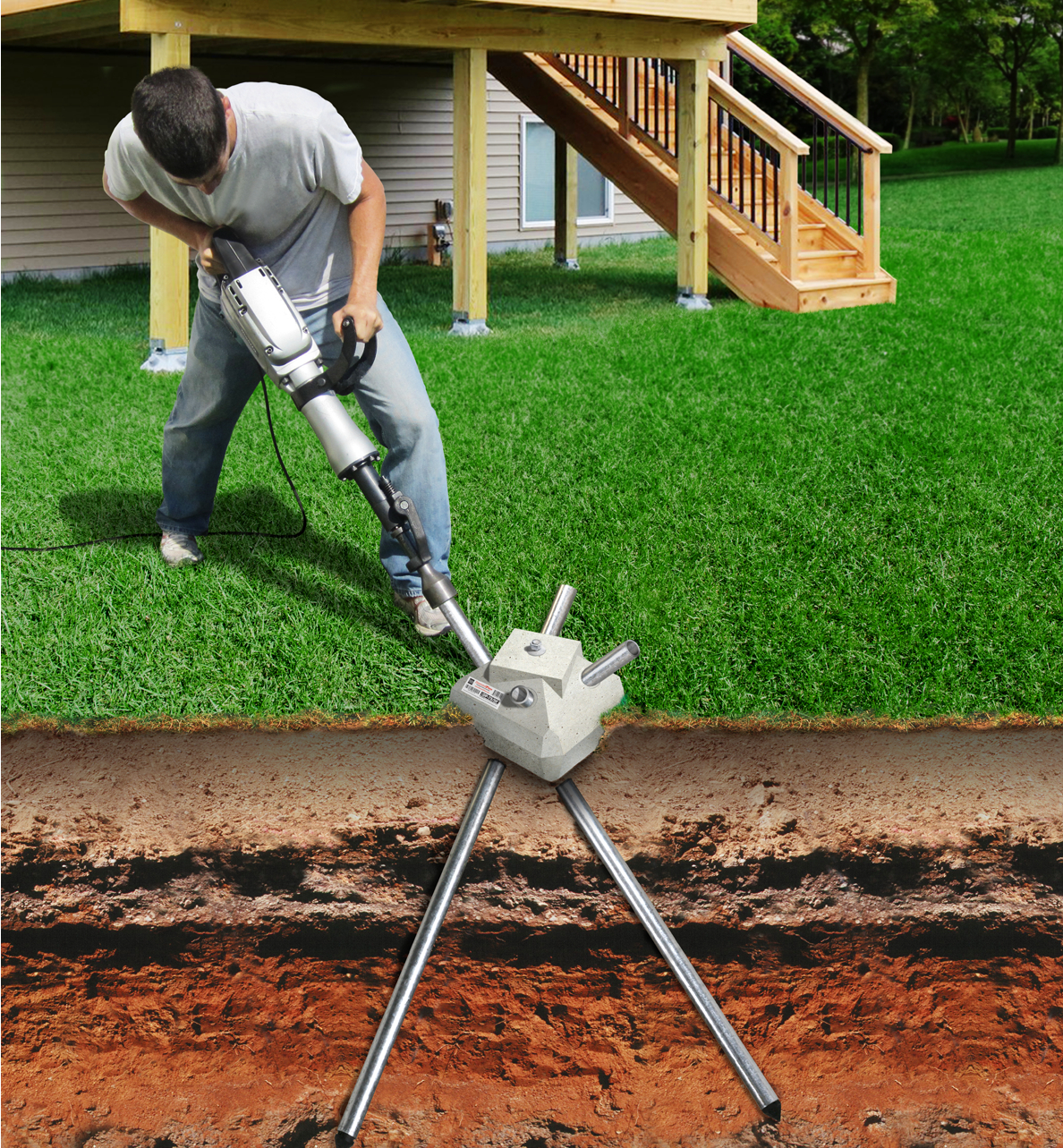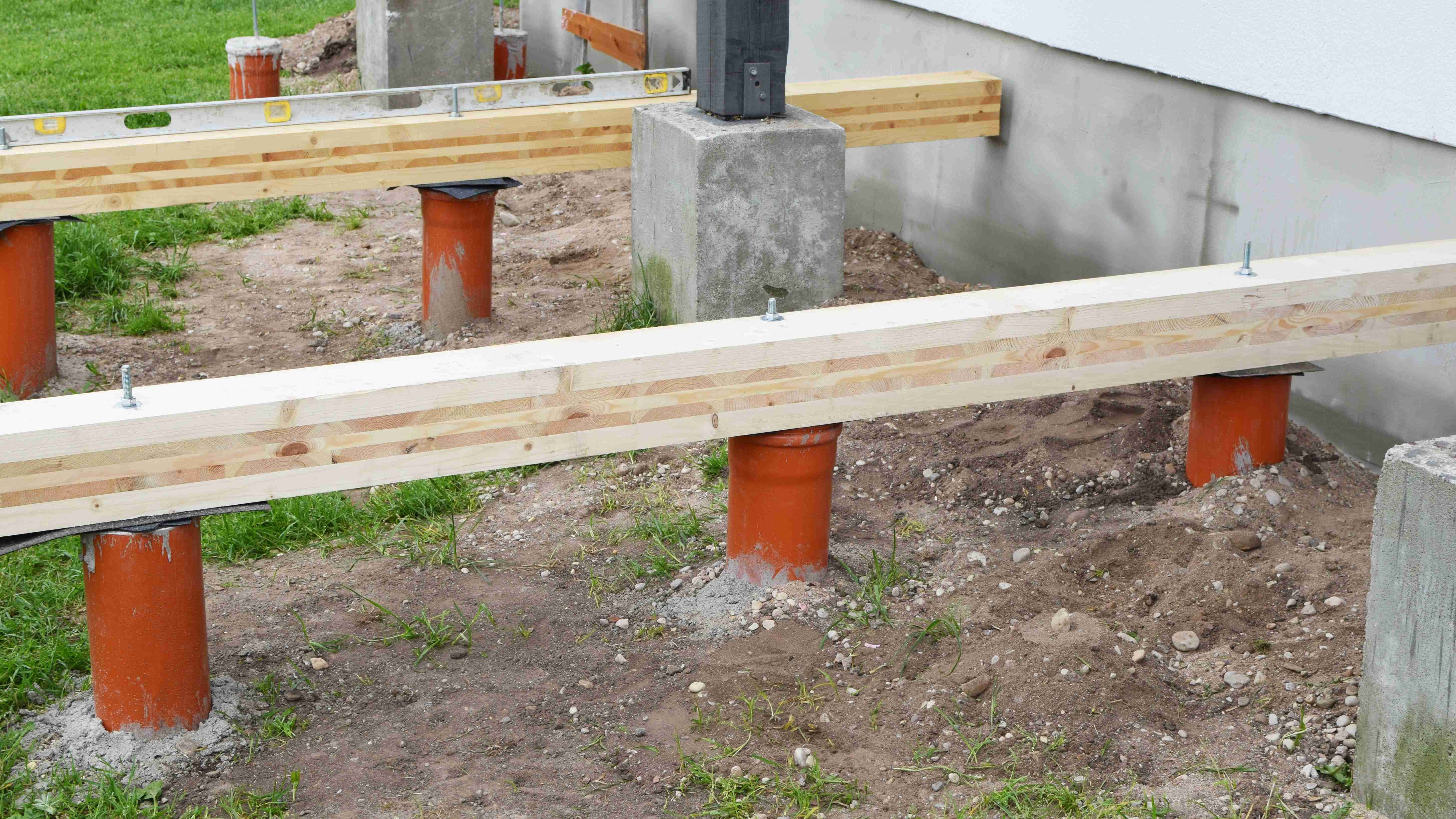Structure from the Ground Up: The Ultimate Overview to Creating and Setting Up Deck Footings
Structure from the Ground Up: The Ultimate Overview to Creating and Setting Up Deck Footings
Blog Article
Make The Most Of the Lifespan of Your Deck With Trusted and Solid Footings
As house owners, we spend a substantial quantity of time and resources into developing the perfect outdoor room. A deck is commonly the centerpiece of that area, offering an area to unwind, delight, and take pleasure in the charm of nature. Nevertheless, in order to totally optimize the life expectancy of your deck, it is crucial to guarantee that it is improved reputable and strong footings. These footings form the structure of your deck, giving security and support, and are commonly the difference between a deck that lasts for decades and one that needs consistent repairs. In this discussion, we will discover the importance of trusted footings, the various sorts of solid footing materials, proper installment methods, and exactly how to keep and inspect your deck's footings to stop damages. Whether you are in the process of constructing a brand-new deck or looking to enhance the longevity of your existing one, join us as we uncover the secrets to a deck that stands the test of time.
Relevance of Trusted Grounds
The significance of trustworthy grounds can not be overstated when it concerns making best use of the lifespan of your deck. The footings serve as the foundation upon which the entire framework relaxes, providing stability and assistance. Without a strong ground, the deck is at risk to changing, sinking, and also collapse, which can substantially minimize its life-span and position safety and security risks.

Picking the best type of ground is likewise vital. Employing a professional to evaluate the dirt, layout the footings, and make sure correct installation is extremely advised.
Investing in trusted footings may involve additional expense and effort upfront, yet it is a rewarding investment that will add to the long-term longevity and safety of your deck. By ensuring a strong structure, you can appreciate your deck for years to come, understanding that it is developed to withstand the test of time.
Kinds Of Strong Ground Materials
To guarantee the stability and long life of your deck, it is necessary to consider the various sorts of solid ground materials offered. The option of footing product is vital as it provides the necessary support and security to endure the weight and lots of the deck structure.
One typical and trusted product used for deck grounds is concrete. Concrete footings are long lasting and offer superb security. They can be put straight right into the ground or utilize precast concrete grounds for easier installment. An additional alternative is helical piers, which are steel shafts with helical plates that are screwed into the ground. These piers supply exceptional load-bearing ability and can be utilized in different dirt problems.
For locations with inadequate dirt problems, such as expansive or loosened dirts, a ground system that utilizes steel or composite piers may be favored. Deck Footings. These piers are driven deep right into the ground to reach steady soil layers, guaranteeing the security of the deck
Sometimes, deck grounds can additionally be constructed utilizing cured lumber. It is crucial to guarantee that the lumber is effectively dealt with to withstand rot and degeneration created by exposure to wetness and insects.
When selecting a ground product for your deck, it is vital to consider variables such as soil conditions, climate, and neighborhood building regulations. Consulting with a specialist contractor or structural designer can help identify the most ideal footing product for your specific deck job.
Appropriate Installation Techniques for Grounds
Taking into consideration the value of making certain stability and sturdiness for your deck, it is important to understand the proper installation methods for footings. The success of your deck task relies heavily on the integrity of its foundation, which is why complying with the right installation methods is essential.
Firstly, it is needed to determine the suitable dimension and depth of the footings based on the style and tons demands of your deck. This details can be acquired from constructing codes or with assessment with a structural engineer. As a general rule, grounds must be at the very least 12 inches in size and prolong below the frost line to avoid changing or clearing up.
As soon as the measurements are established, the following action is excavation. Digging the holes for the footings should be done with accuracy, seeing to it they are deep sufficient and have a level bottom. Deck Footings. This will certainly offer a steady base for the footings
To additionally enhance the security of the footings, it is advised to use a concrete blend with a toughness of at the very least 3,000 psi. This will certainly make sure the footings can hold up against the weight and forces applied by the deck.
During setup, it is essential to maintain the grounds level and straightened correctly. This can be attained by using a degree and string lines to guide the positioning of each ground.
Preserving and Evaluating Your Deck's Footings
Routine upkeep and complete evaluations are crucial for guaranteeing the lasting stability and security of your deck's grounds. Over go to website time, footings can catch tear and use, weather, and soil activity, which can compromise their structural honesty. To take full advantage of the life-span of your deck's footings, it is important to apply a regular upkeep routine and conduct thorough inspections.

Additionally, it is critical to check footings for any signs of damages or wear and tear. This consists of monitoring for cracks, divides, or collapsing concrete, as well as any type of indications of activity or settlement. Any kind of concerns ought to be dealt with quickly to avoid more damage and ensure the stability of the deck.
In addition, it is recommended to evaluate the bordering dirt for any type of indications of erosion or shifting. Soil movement can affect the security of the footings, so it is very important to deal with any soil-related problems promptly.
Signs of Ground Damages and Exactly How to Address Them
Footing damages can posture major risks to the stability and safety and security of your deck, making it necessary to immediately recognize and attend to any type of indicators of damage. One of he said the most typical signs of footing damage is sinking or resolving of the deck. This can occur because of soil erosion, poor grounds, or bad building and construction techniques. If you notice that your deck is unequal or leaning, it is vital to take immediate action to stop further damage. One more indicator of footing damage is cracking or falling apart of the concrete grounds. This can be brought on by freeze-thaw cycles, excessive dampness, or bad quality concrete. If you observe any kind of splits or damage in the grounds, it is necessary to have them inspected and repaired by an expert. Furthermore, if you observe any type of movement or changing of the deck, such as a deck that really feels unstable when strolled on or wobbles when weight is used, it can be a sign of footing damage. In such situations, it is advised to seek advice from with a structural designer or an expert service provider to analyze the degree of the damage and identify the suitable strategy. Bear in mind, attending to ground damage immediately can aid guarantee the long-term stability and security of your deck.
Conclusion
Finally, making certain the dependability and toughness Source of grounds is critical for maximizing the life-span of your deck. By utilizing solid footing materials and effectively mounting them, you can prevent damage and preserve the security of your deck. Normal maintenance and examinations will additionally help determine any type of signs of footing damage and enable prompt fixings. Inevitably, taking these measures will assist maintain the stability and longevity of your deck.
These footings create the structure of your deck, supplying security and assistance, and are typically the distinction between a deck that lasts for years and one that requires continuous repair work. In this discussion, we will explore the significance of dependable footings, the different types of strong footing materials, appropriate installment strategies, and how to preserve and evaluate your deck's grounds to stop damage.Routine upkeep and thorough examinations are necessary for making certain the lasting security and safety of your deck's footings. Remember, attending to ground damages quickly can assist make certain the lasting stability and safety and security of your deck.
By utilizing solid ground products and effectively installing them, you can stop damages and keep the stability of your deck.
Report this page